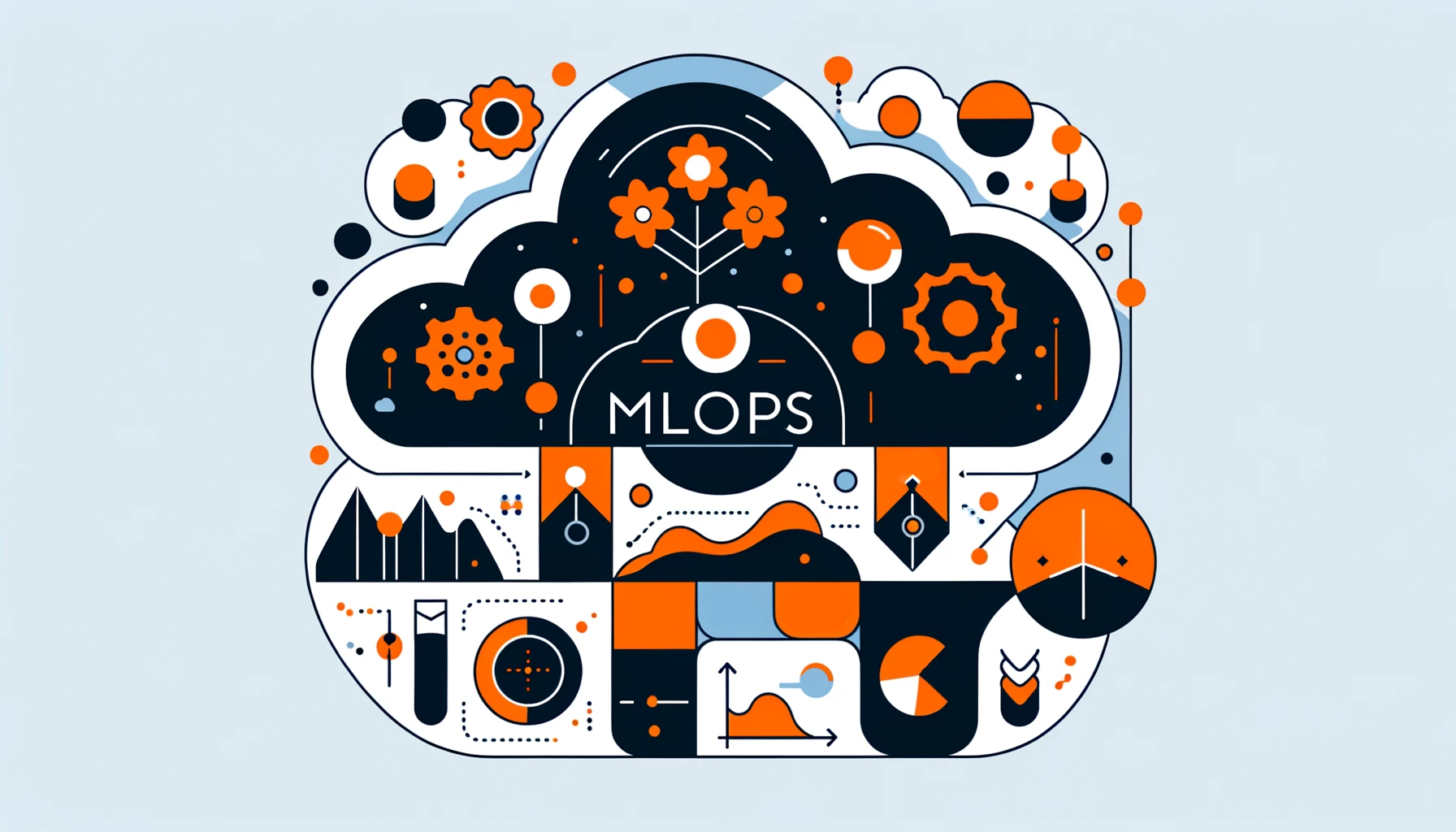
MLOps Activities: Best Practices to Implement

Introduction
Machine learning is important for businesses. It’s crucial to have good practices for creating, using, and managing ML models. This article will discuss the basics of MLOps and best practices. It will also cover key activities, machine learning security, and tools for managing ML models and data sets.
MLOps stands for “Machine Learning Operations” and focuses on deploying and maintaining machine learning models in production efficiently.
What is MLOps?
MLOps is a practice for collaboration and communication between data scientists and operations professionals to help manage the production machine learning system lifecycle. MLOps, like DevOps for software, aims to automate and enhance production ML quality, while also considering business and regulatory needs. A real-world robust MLOps practice includes a few key activities:
- Tracking and versioning ML models, data, and parameters
- Packaging and deploying ML models into production
- Monitoring ML model performance and data drift
- Governing and securing access to ML assets and artifacts
By adopting MLOps practices, organizations can streamline the ML lifecycle, increase collaboration between teams, and ultimately achieve faster, more reliable model deployments.
Key MLOps Activities
Let’s take a closer look at some of the core activities involved in MLOps:
1. Model Development & Experimentation
MLOps begins in the model development and experimentation phase. Data scientists work in notebooks and IDEs to preprocess data, select algorithms, and train models. MLOps tools are essential for streamlining the machine learning development process.
These tools assist data scientists and machine learning engineers in tracking experiments, saving model information, and preparing models for use. MLOps tools make it easier for teams to handle the entire machine learning process, including data preparation, model training, and deployment.
One popular tool for model development is Jupyter Notebook, which provides an interactive environment for data analysis and visualization. Data scientists can write and execute code, view results, and share their work with others using Jupyter Notebook. AWS SageMaker is a tool that helps users create, train, and use machine learning models on a large scale. With SageMaker, teams can quickly experiment with different algorithms and frameworks, and easily deploy models to production.
Azure ML is a popular tool for creating, training, and launching machine learning models. It has many useful features. With Azure ML, teams can collaborate on projects, track experiments, and automate model training and deployment processes.
MLOps tools are essential for organizations to create and use machine learning models effectively. Some examples of these tools include Jupyter Notebook, AWS SageMaker, and Azure ML. These tools play a crucial role in streamlining the machine learning process. They help organizations in developing and deploying machine learning models efficiently.
2. Model Packaging & Deployment
Once a model is trained and validated, it needs to be packaged and deployed to a production environment. MLOps practices use CI/CD pipelines to automate building, testing, and deploying model packages.
The model package includes the trained model, dependencies, and configuration files. It is a complete bundle for easy use. The package usually comes with a REST API or interface for users to easily share predictions from the model.
MLflow, Kubeflow, and Seldon Core are popular tools in the machine learning community for packaging and deploying models. These tools help with managing, updating, and deploying models to various locations such as the cloud or servers. This simplifies the overall process.
These tools help data scientists and machine learning engineers package their models more efficiently for use in production applications. This makes deploying the model easier. It ensures that users can easily access and scale the model to make predictions.
3. Model Monitoring & Observability
Once the model is in use, MLOps ensures that the model’s performance and input data quality are monitored regularly. Model monitoring tools play a crucial role in ensuring the ongoing performance and reliability of machine learning models. These tools track how well a model predicts, if the data changes, and if the data is biased. By continuously monitoring these metrics, organizations can quickly identify any issues that may arise and take corrective action to maintain the model’s effectiveness.
In addition to monitoring model performance, it is also essential to have visibility into the underlying infrastructure supporting the model. This involves keeping an eye on things like latency, throughput, and errors to make sure the model is working well. By having this level of observability, organizations can proactively address any potential issues before they impact the model’s performance.
Some popular model monitoring tools that organizations can utilize include Fiddler, Arthur AI, and WhyLabs. These tools help organizations monitor and manage their machine learning models to ensure they provide accurate and reliable results consistently. By using these tools, organizations can keep their models performing well and achieving better results for their business.
4. Model Governance & Security
Finally, MLOps must consider governance and security for ML assets. This includes access controls, compliance requirements, and audit trails. ML models and datasets contain valuable information. It is important to protect this data when storing and transferring it.
Secure login methods should be used to access this information. Additionally, it is important to be vigilant and watch for any security issues that may arise. Tools like Apache Atlas, Collibra, and Privacera can help with ML governance and security.
Machine Learning Security
Security is a key consideration in any MLOps practice. ML models and data can be vulnerable to a variety of security risks, including:
- Data poisoning attacks, where an attacker manipulates training data to compromise model performance
- Model extraction attacks, where an attacker steals the model through its public API
- Adversarial attacks, where an attacker exploits weaknesses in the model with malicious input
To mitigate these risks, it’s essential to implement secure coding practices, encrypt sensitive data, restrict access to ML systems, and continuously monitor for security anomalies. Techniques like differential privacy can also help protect data by adding statistical noise without significantly impacting model performance. Regularly conducting security audits and penetration testing is also best practice.
Tips for Managing ML Data
Data is the foundation of any ML system, so effective data management is critical for MLOps success. Here are some tips and best practices:
- Establish a data governance framework with clear policies for data collection, storage, access, and usage. Tools like Apache Atlas and Collibra can help.
- Use version control for data and establish data lineage to track how datasets evolve over time. Git LFS and DVC work well for versioning large datasets.
- Implement data validation checks to ensure data quality and integrity. Great Expectations and Monte Carlo are useful data validation tools.
- Use data cataloging tools to make it easy to discover and understand available datasets. Options include Amundsen and Metacat.
- Be mindful of data security and privacy. Encrypt data in transit and at rest, implement secure access controls, and anonymize data when appropriate. Tools like Privacera can help manage data security.
Examples of MLOps in Action
Let’s look at a couple examples of how organizations are applying MLOps practices:
- Fraud Detection A financial services company built an ML model to detect fraudulent transactions. They used MLflow to track model experiments, package the final model, and deploy it to production. Fiddler monitors the model, tracking accuracy over time and alerting if performance degrades. Airflow orchestrates workflows, while Kafka handles real-time data streams.
Outcome: MLOps helps the company deploy fraud detection models 5 times faster, with a 50% decrease in false positives. The team can retrain and redeploy models in under 30 minutes when issues arise.
- Predictive Maintenance A manufacturing company developed ML models to predict equipment failures on the factory floor. They used Kubeflow Pipelines to build and deploy the models, with feature stores managed in Feast. Great Expectations validates the input data, with Spark Jobs orchestrating data pipelines. Monitoring is performed using Arthur AI.
Result: Leveraging MLOps practices, the company has increased production uptime by 15% by proactively scheduling maintenance before breakdowns occur. New models can be developed and deployed in days rather than weeks.
These examples show the very real impact MLOps can have on an organization’s bottom line. The key is adopting the right tools and practices for your use case and environment.
Conclusion
MLOps is a powerful practice that looks to bring the core principles of DevOps to machine learning. By focusing on automation, reproducibility, and reliability, MLOps can help organizations achieve faster model velocity, shorter deployment cycles, and overall higher quality ML applications.
But realizing these benefits requires implementing key activities like model tracking, packaging, monitoring, and governance. It also means paying close attention to ML security risks and data management challenges. Fortunately, a growing ecosystem of MLOps platforms and tools is making it easier than ever to put these practices into action.
At DataSunrise, we offer user-friendly and flexible tools for data storage security, masking, and compliance that are a great fit for any MLOps tech stack. Our platform can help you protect sensitive ML data and meet governance requirements without sacrificing productivity. To see DataSunrise tools in action, visit our website and schedule an online demo.
